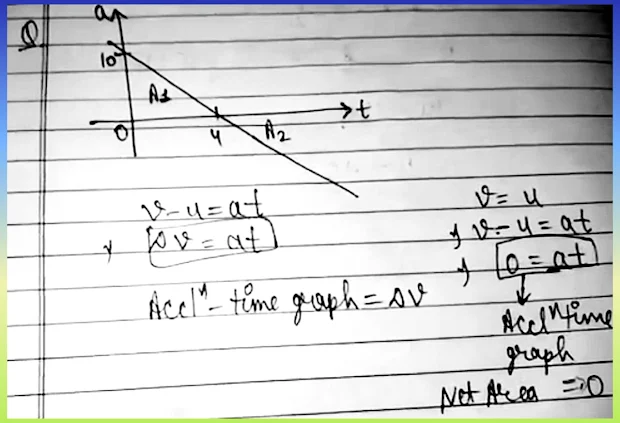Find Time When Initial Velocity is Regained | Acceleration-Time Graph | JEE Physics | Doubtify JEE
⏱️ Acceleration-Time Graph – Find Time When Initial Velocity is Regained | JEE Physics | Doubtify JEE
❓ Question:
The acceleration-time graph of a particle is as shown. At what time does the particle acquire its initial velocity again?
📄 Solution Page Link:
🧠 Concept Behind the Question:
To solve this problem, we need to recall that velocity is the area under the acceleration-time (a–t) graph. The area under the graph from the beginning of motion till a certain time gives the change in velocity in that time interval.
-
Positive area (above time axis) → velocity increases
-
Negative area (below time axis) → velocity decreases
So, the total area from t = 0 to t = some time = 0, means the net change in velocity is zero.
This tells us that the particle has returned to its initial velocity.
📊 Step-by-Step Explanation:
Let’s say the particle starts with velocity v₀ at t = 0.
-
From 0 to some time t₁, acceleration is positive → velocity increases.
-
From t₁ to t₂, acceleration is negative → velocity decreases.
We want to find the time t where:
Net change in velocity = 0
⇒ Area under graph from 0 to t = 0
This happens when the area above the time axis (positive) and the area below (negative) are equal in magnitude.
👉 So visually, observe the graph carefully and calculate or compare areas geometrically.
Once the net area = 0, the velocity comes back to its initial value.
📝 Final Answer:
From the graph (shown in the solution), the areas balance out at a specific time t = ___ s
🎥 Video Solution:
🔍 Why This Question is Important:
-
It’s a graph-based conceptual question that regularly appears in JEE Mains.
-
Combines integration of acceleration and interpretation of graphical data.
-
Tests your ability to visualize motion and apply physics meaningfully.
-
Strengthens your grip on kinematics and calculus-based motion.
💬 Have a Doubt?
DM us on Instagram or mail us at doubtifyqueries@gmail.com – We’re here to help!
🎯 Pro Tip:
Always check unit consistency and area calculation in a–t graph questions. These are commonly used tricks in competitive exams like JEE.
Stay consistent. Watch – Pause – Solve – Repeat.
Team Doubtify is with you till the finish line! 💪






Comments
Post a Comment
Have a doubt? Drop it below and we'll help you out!